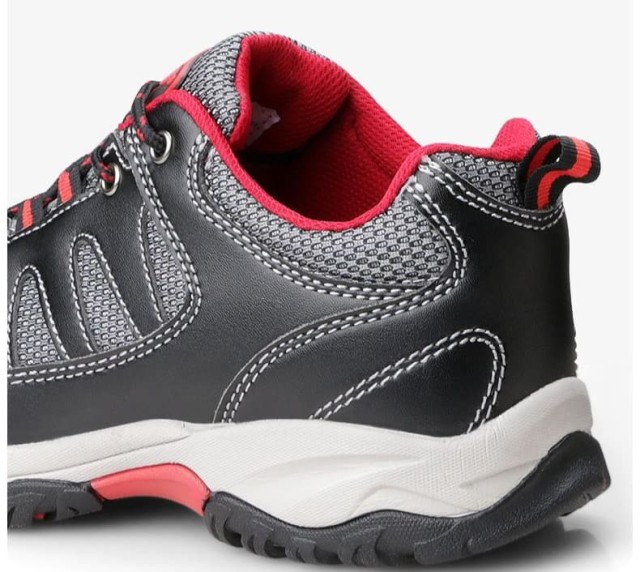When selecting work boots, construction method dramatically impacts durability, comfort, and total ownership costs. This guide compares cement vs. welt construction through three decision-making lenses: material science, job-specific demands, and long-term value—helping tradespeople and procurement managers optimize their investment.
Cement vs. Welt Construction: Core Differences
Bonding Methods and Material Science
Cement construction uses high-strength adhesives to bond the upper directly to the outsole. This creates:
- Lighter weight: Ideal for jobs requiring all-day mobility (e.g., healthcare, electrical work)
- Faster production: Typically 20-30% lower upfront costs than welted alternatives
Goodyear welt construction stitches a leather/rubber strip (welt) between the upper and sole, offering:
- Superior torsion control: Critical for uneven terrain (construction, forestry)
- Water resistance: The stitched barrier minimizes moisture penetration in wet conditions
Research shows welt seams withstand 3-5× more flex cycles before failure compared to adhesive bonds.
Cost-Benefit Analysis Over Boot Lifespan
| Factor | Cement Construction | Welt Construction |
|---|---|---|
| Initial Cost | $80-$120 | $150-$220 |
| Avg. Resole Cycles | Not repairable | 3-5 times |
| Effective Lifespan | 8-12 months | 2-4 years |
Key insight: While welt boots cost ~40% more initially, their resole capability can reduce long-term expenses by 60% for high-abrasion roles.
Use-Case Scenarios for Each Construction
Heavy-Duty Industrial Work
Welt construction dominates in:
- Oil/gas operations: Stitched seams resist chemical exposure better than adhesives
- Construction sites: ASTM-compliant models handle repeated impact from heavy materials
- Cold storage: Multi-layer stitching insulates better against conductive heat loss
OSHA Alert: Steel toes are mandatory for these environments—ensure welt stitching doesn’t compromise protective toe box integrity.
Lightweight Needs for All-Day Comfort
Cement-built boots excel when:
- Healthcare workers walk 5-8 miles daily (per CDC studies)—their 25% weight reduction reduces fatigue
- Electricians need electrical hazard (EH) protection without bulky stitching
- Warehouse staff prioritize slip resistance over extreme durability
Pro Tip: Look for cement boots with molded EVA midsoles for shock absorption during 10+ hour shifts.
Long-Term Value and Maintenance
Resoling Costs and Repair Feasibility
- Welt boots: Resoling costs $40-$80, restoring ~90% of original performance. Stitch channels allow 3+ resoles before retiring the upper.
- Cement boots: Adhesive failure usually requires full replacement. Some models permit 1-2 sole regluing attempts if the upper remains intact.
Budget Hack: For seasonal workers, cement boots may suffice. Year-round professionals save more with welted options.
Industry-Specific Safety Standards
Both constructions meet OSHA/ASTM standards when properly engineered, but:
- Welt advantages: ASTM F2413-18 puncture resistance is more consistent in stitched designs
- Cement advantages: Achieves EH ratings with fewer conductive materials
Compliance Note: Healthcare boots often blend cement construction with slip-resistant rubber compounds (per ANSI/ASTM F2913).
Upgrade Your Footwear Strategy with 3515
Whether you're equipping a construction crew or sourcing breathable boots for medical teams, 3515's manufacturing expertise delivers OSHA-compliant solutions in both cement and welt constructions. [Contact our specialists] for bulk pricing tailored to your workforce's unique demands—because the right construction method shouldn't be a compromise.
Related Products
- Athletic Safety Shoes with Dial Closure & Steel Toe for Wholesale & Custom Manufacturing
- Wholesale Anti-Smash & Puncture-Proof Safety Shoes Custom Manufacturing for Brands
- Wholesale Durable 6-Inch Work Boots | Custom & Private Label Manufacturer
- Durable Leather Work Boots Wholesale Manufacturer & Custom Factory
- Wholesale Slip-On Safety Boots Manufacturer - Custom Puncture-Proof & Steel Toe
Related Articles
- Steel Toe Work Boots: Balancing Safety and Comfort for Demanding Jobs
- Matching Men’s Work Shoe Safety Technologies to Workplace Hazards
- How to Choose Safety Footwear That Solves Steel Toe Shoe Problems Without Sacrificing Protection
- How Steel Toe Boots Deliver Financial and Safety Returns in High-Risk Workplaces
- How to Choose Between Steel and Composite Toe Boots for Maximum Safety




















